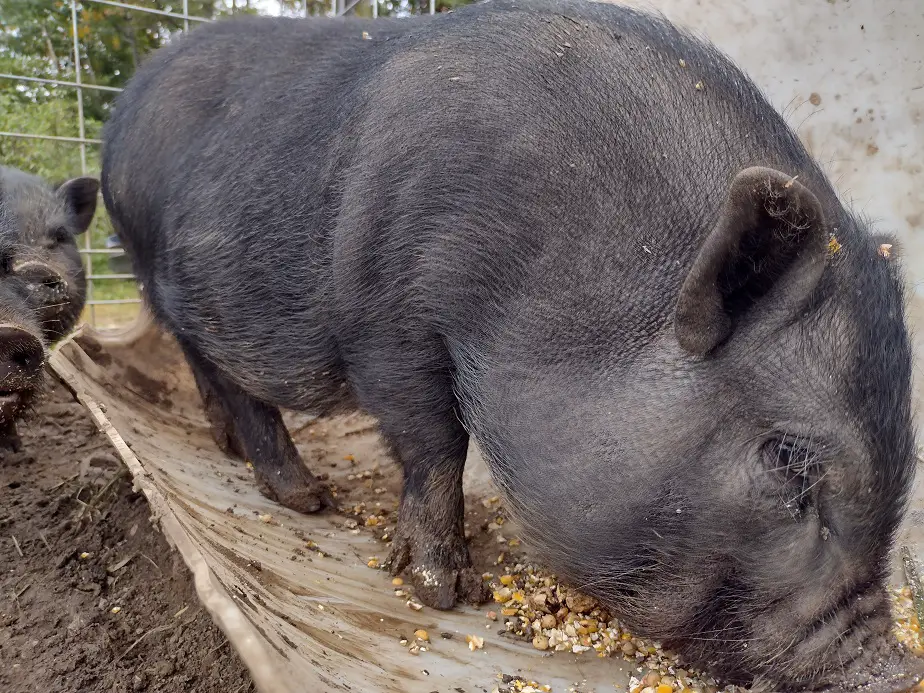Very few people today know the differences in dealing with these two types of pigs. Knowledge on lard pigs is especially hard to find.
Lard pigs produce rich, juicy meat with high marbling scores. They fatten easily and come in many sizes. Bacon pigs are large and lean, and produce a lighter-colored, drier meat. Bacon Pigs have a long mid-section for producing more bacon. Lard pigs need less concentrated feed and are more adaptable to outdoor raising.
First let’s talk more about each type, then cover the standard ways to raise both of these types of pigs.
The Differences Between Lard Pigs and Bacon Pigs
The identifying factor of lard pigs is that they will get very plump and round when heavily fed. Bacon pigs are long and lean, and don’t make much fat. For most of known history, lard pigs have been the preferred body type in pigs. Most breeds of pigs are lard pigs, including wild hogs.
Lard pigs have the genetic makeup to put on quite a bit of fat fairly easily. Up until the mid-1960s, that was the only type of pig raised commercially for meat in the US. That actually changed when the sugar industry put out a faulty report claiming fat as the single cause of a heart health epidemic of the time.
As it turns out, the report was phony and the real issues were smoking and heavy consumption of refined sugar. Nonetheless, pork changed. Since fatty pork was undesirable, the pork industry came up with a solution. Breed lean pigs with pale meat and market it as “the other white meat” for heart health.
The classic butcher-ready lard pig could be anywhere from slightly round to heavily obese and ballooned with fat. Most of the fat is simply trimmed off the carcass by the butcher and cooked down into lard. It’s funny, quality lard is now considered a heart-healthy cooking fat.
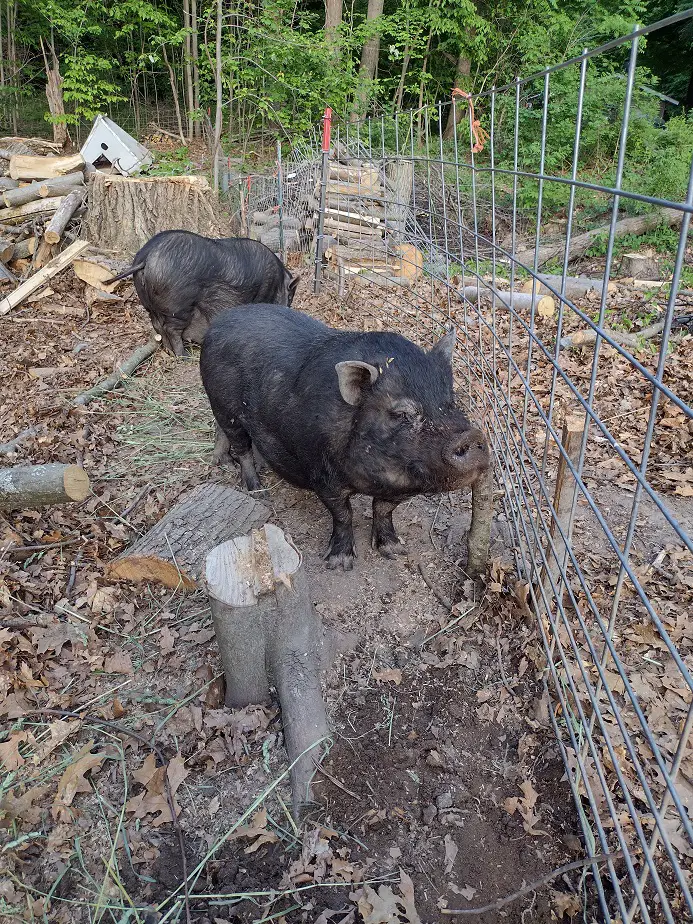
Lard pigs usually have a more compact, stubby sort of body. They tend to have a shorter belly and fewer teats because of this. For the record, they’re not all fat. They can only be as fat as you let them get. I prefer a bit on the fatty side but not anything ridiculous.
The farmers I know who raise lard pigs prefer 1 inch to 1-1/2 inches of backfat on their animals. I raise a smaller breed, so I like up to 1/2 inch. At that point, I can get some very well-marbled pork and a bit of extra fat for lard, but it still looks like good pork.
Bacon pigs can get fat, but not as much and not as easily. They are supposed to be quite lean and have only a small amount of marbling. The only somewhat fatty part of a bacon pig is the belly, where bacon comes from.
The modern bacon pigs have almost too much muscle for their size, in my opinion, and the result is paler pork with less flavor overall. The breeds with the most wide-known reputation for quality pork are all lard pigs. Just as with beef, fattier animals have more marbling which means flavor and tenderness.
Here’s an article about the lard pigs we raise. Raising and Butchering Potbelly Pigs for Meat
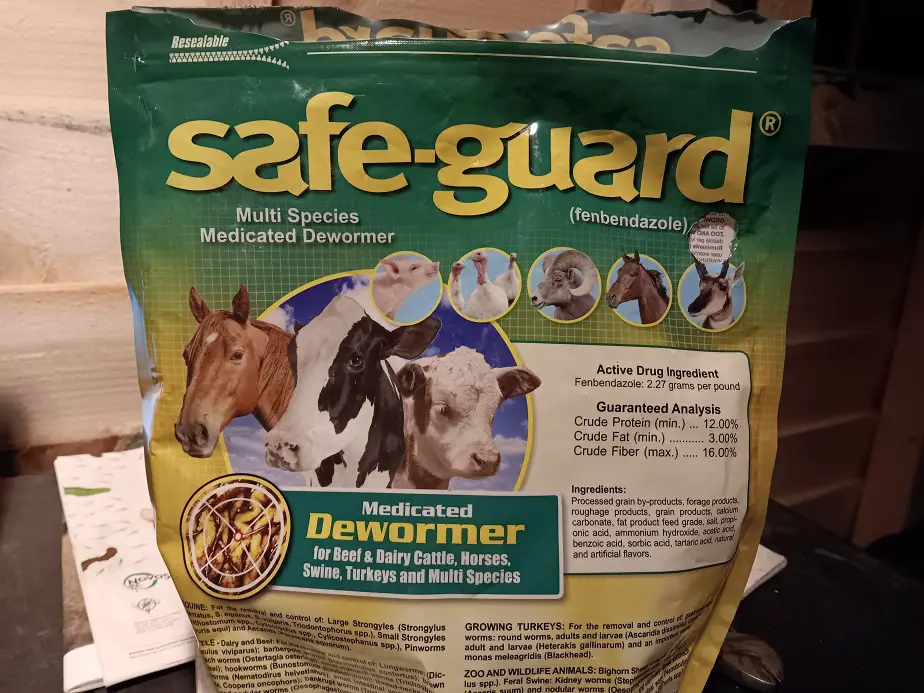
One thing you need for pigs, no matter your raising system, is a parasitic worm treatment. The best swine dewormer is Fenbendazole. It’s known by the brand name Safeguard. Safeguard is available as a medicated corn/alfalfa pellet. It’s the only way I can worm my pigs since they won’t stand still for an injection of Ivermectin. It’s easy and cheap.
- There is a stronger pellet for swine only. Here it is on Amazon
- There is a weaker pellet for general barnyard livestock, including swine. Here it is on Amazon.
I use the multi-species version because it’s what’s available in my local store and I can use it for my chickens too. It’s the most effective swine wormer and the easiest to administer. I use it on all weaned piglets and adults twice a year. Don’t go without it.
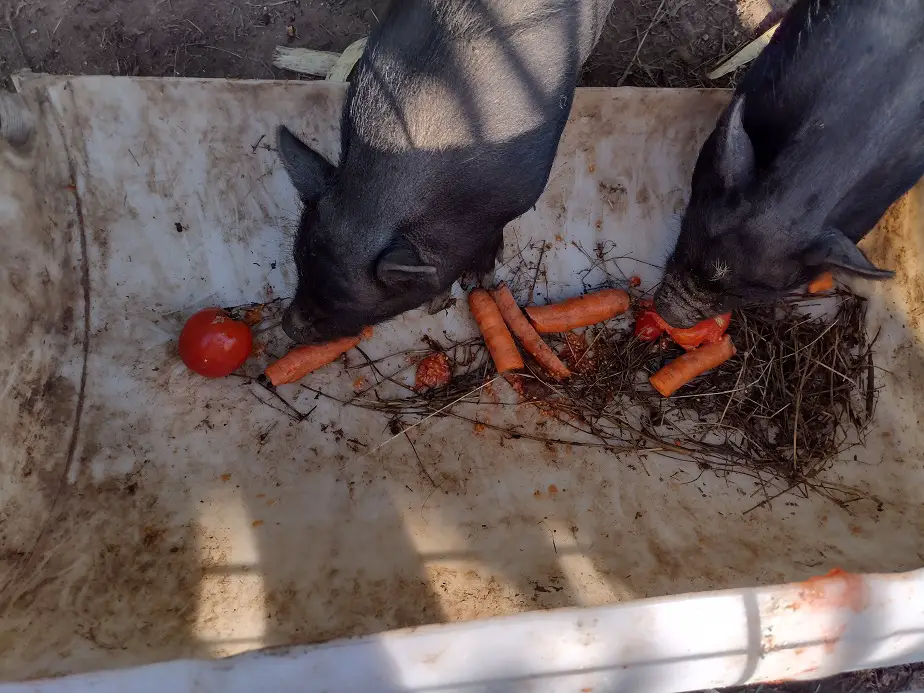
Feeding Lard Pigs vs Bacon Pigs
Any type of Pig can be raised on the same type of feed. I don’t use commercial feed because of the cost. We go with significantly cheaper options. Generally, a pig should be fed a slightly lesser-protein, lesser-calorie diet by around 5 or 6 months old to keep them from getting too fat.
All Pigs slow down muscle growth by around 5 months. All pigs increase fat production by around 5 months. Lard pigs will significantly increase fat production. If you want a pig with a lot of lard, give it a grain-heavy diet with free-choice feedings and let it get older.
Lard pigs are often fed a less concentrated diet than modern, lean, commercial hogs. Part of that reason is that they tend to be smaller and don’t need quite as much, particularly with protein. A pig that is well-fed before 5 months old will fatten up much better than one that had sub-par feed.
Still, there are different feeding options. We feed our lard pigs a combination of fermented whole grains, tree fodder, pasture grass, and kitchen scraps. They end up decently fat but not overly so, and perhaps a bit on the smaller side. But the savings in feed is worth it.
The way you feed your pig will largely determine the body condition you will end up with. Even lard pigs can be raised on the leaner side. They will still be more well-marbled than a commercial hog. In my opinion, lard pigs should be kept on the leaner to slightly fat side.
Feeding a pig for a heavy yield of fat takes a lot more feed and the animal tends to have a very poor feed conversion ratio at that point. It takes a year on concentrated feeds to get a very fat pig, even for lard pigs.
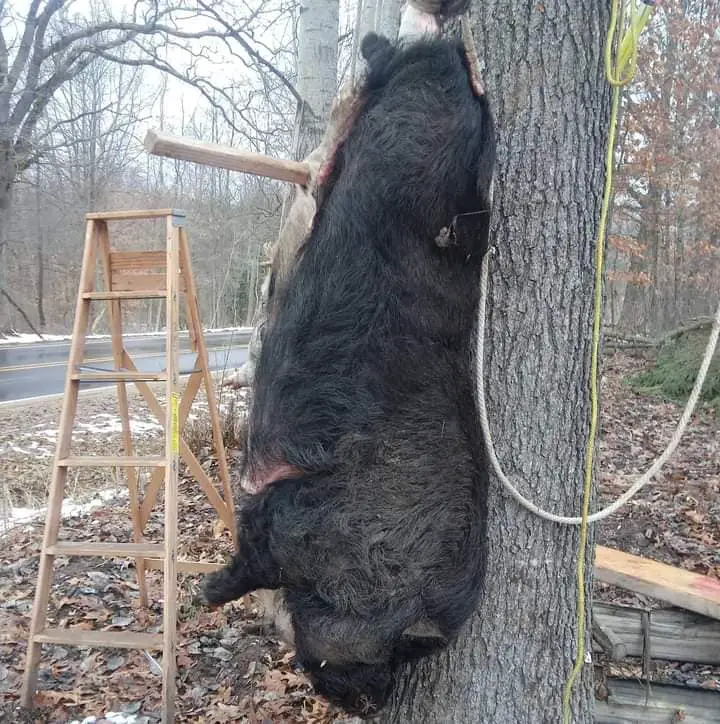
Which Type of Pig is Better?
Lard pigs produce better meat than bacon pigs. It’s more marbled, tender, and tastier. The most desirable and expensive pork comes from lard breeds. The chops and roasts from lard pigs are unrivaled. Bacon pigs produce the leaner, meatier bacon that’s popular today.
The bacon pig is the common breed these days due to clever marketing and the industry requiring all farmers to offer only that product. But, there are also a lot more people these days that don’t like pork. Pork used to be the most loved of meats. Now, not so much.
Many people complain about dry pork chops and flavorless pork. There are two ways to fix that: Raise pigs in a better environment, and raise a lard breed. There is an art to producing delicious pork and the modern commercial industry doesn’t have it.
How Much Fat From a Lard Pig?
A 250-pound lard pig should produce 25 to 50 pounds of lard in decent condition. A well-shaped lard pig should be around 20 to 30 percent body fat and half of that can be trimmed to make lard. That’s twice the fat of a commercial hog. Very fat pigs can be over 40 percent body fat.
The amount of lard on a pig depends on its age, feed quality, and how much it eats. Older pigs get fatter. Higher-calorie feed makes more fat. Increased feed intake makes more fat. By controlling these factors, you can control the amount of fat on any pig.
Related Articles:

